Sardinian Food Dishes: Basic Overview
Common Ingredients
Common Cooking Methods
Courses
Meals
Key Taste
Eating Etiquette
Meal Presentation
Culinary Festivals
Influence and Fusion
Sardinian Food Dishes: Origin and Region
Cuisine
Cuisine’s Geographical Territory
Popular Types of Sardinian Dishes
-
Pasta Dishes
There are many types of pasta native to Sardina.
These dishes are usually made with semolina flour and served with rich tomato or meat sauce.
Certain pasta dishes contain cheese or vegetables.
-
Desserts
Sardinian desserts include sweets and pastries.
These treats often incorporate nuts, honey, dried fruits, and various spices.
Desserts in Sardinian cuisine are typically enjoyed at the end of meals or during snack times
Sardinian dishes are various delicacies, from pasta dishes to roasted dishes and desserts, in Sardinia, a large Italian island.
Sardinian cuisine is predominantly Mediterranean. Similar to Italian delicacies in other parts of the country, local dishes emphasize the use of fresh, simple, and high-quality ingredients sourced from local environments.
Seafood, semolina-based food (like bread and pasta), meat, cheese, fruits, and vegetables are staples in Sardinian cuisine. Herbs and spices are also used in abundance.
Join me in discovering the beauty of traditional Sardinian dishes, their global fame, and the celebrated wholesomeness of local food offerings.
Next, I will provide you with interesting facts about the 15 most popular dishes in Sardinia before moving on to the general features of local cuisine and the best beverages for drink pairings.
15 Superb Sardinian Dishes
The most popular 15 dishes from Sardinia are waiting for you! Scroll down and use advanced filters to make your reading experience easier.
These filters concern alphabetical sorting, main ingredients, taste, cooking methods, dish types, courses, and global popularity. In addition, there are filters based on specific culinary styles, such as traditional, national, and street food options.
Pane Carasau
- Traditional
Pane carasau is a traditional Sardinian flatbread known for having thin, paper-like layers with a crunchy texture. It has a unique preparation method that involves baking, splitting, and toasting to achieve its characteristic crispness.
Interestingly, Italians often refer to pane carasau as “carta da musica” (“music sheet”) due to its incredibly thin shape.
Dating back to ancient times, pane carasau originated from the island’s pastoral culture as it was originally prepared for shepherds. Its long shelf life made it a staple for extended trips.
Pane carasau is often enjoyed as an accompaniment to various dishes or a base for many toppings, such as cheese, cured meat, and sauces.
Porcheddu
- Traditional
Porcheddu, also spelled as porceddu, is the Sardinian version of roasted suckling pig. Originally confined to Sardinia, it is now widely available throughout Italy.
To prepare porcheddu, locals season a whole piglet with aromatic herbs like myrtle and rosemary, then slow-roasting over an open fire or in a wood oven for approximately 6 hours. The pig will have tender, flavorful meat with a crispy exterior.
In the past, porcheddu was only prepared by shepherds for Easter. Today, this roasted suckling pig is commonly served at festivals, weddings, and other important gatherings.
Culurgiones
- Traditional
Culurgiones are a distinctive type of stuffed pasta in Sardinia, hailing from the present-day province of Nuoro. They resemble large dumplings or ravioli.
Traditional culurgiones consist of a semolina-based exterior and a filling of mashed potatoes, cheese, garlic, mint, and spices. The filling ingredients vary from region to region within Sardinia.
Culurgiones are hand-shaped with a decorative seal to look like ears of wheat, which symbolize the island’s agricultural bounty. People often serve culurgiones with a simple tomato sauce or just a drizzle of olive oil.
Malloreddus
- Traditional
Malloreddus, also known as gnocchetti Sardi (Sardinian gnocchi), are small, ridged, shell-shaped pasta in Sardinian cuisine. They are made from semolina flour and sometimes contain a touch of saffron for added color.
Sardinians typically serve malloreddus with grated cheese and a hearty tomato and sausage sauce. The grooves in the pasta are particularly useful in holding the sauce.
This local version of gnocchi is very well-known in the province of South Sardinia, where it appears on many special occasions, festivals, and weddings.
Fregula
- Traditional
Fregula, often spelled as fregola, is a type of spherical semolina-based pasta in Sardinia. It is similar to couscous but larger in size, leading many people to think that there are close relations between the two.
Fregula offers a nutty flavor that is excellent for soups and salads. Alternatively, cooked fregula pairs well with seafood, fresh herbs, and tomato sauce.
Lorighittas
- Traditional
Lorighittas, literally “small rings,” are a traditional Sardinian semolina pasta originating in the village of Morgongiori. They boast a unique ring shape that is achieved by expertly twisting two strands of dough together.
Since their creation in the 16th century, lorighittas have been a famous staple. Locals traditionally enjoy them with sausage, tomato sauces, and ragù sauces on All Saints’ Day and at other celebrations.
Aragosta alla Catalana
- Traditional
Aragosta alla Catalana is a luxurious Sardinian dish that features lobster as its star ingredient. Its name means Catalonian-style lobster, reflecting the fusion of Italian and Catalan influences on the island.
Sardinians prepare this Catalonian-style lobster dish by boiling a lobster and dressing it with a mix of fresh tomatoes, onions, lemon juice, olive oil, and capers. The combination of the succulent lobster and the tanginess of the dressing makes for a light yet indulgent dish.
Aragosta alla Catalana is often enjoyed in the summer months, especially during festive occasions. Northwest Sardinia offers high-quality lobsters that are ideal for this specialty.
Butàriga
- Traditional
Butàriga is a Sardinian version of bottarga, a traditional delicacy made from the salted and cured roe of gray mullet in Italy. Many people think of it as Sardinian caviar due to its intense umami flavor.
But unlike caviar, butàriga is available in the shape of a hard, dry slab that is grated or thinly sliced to serve with lemons and olive oil on top of crusty bread as an appetizer. This salted fish roe is also a fantastic garnish for pasta and risotto dishes.
Butàriga dates back to antiquity and can be found along the coasts of many Mediterranean regions.
Seada
- Traditional
Seada, also known as sebada, is a Sardinian dumpling dessert created in the late 15th century. Locals make it by filling a semolina dough with Pecorino cheese, then deep-frying the dumpling and drizzling it with honey.
Seada blends savory cheese with the sweetness of the honey, creating a fantastic flavor profile. This sweet and savory dessert is popular in rural areas and can contain lemon peel or be cooked in lard for added flavor.
Pardulas
- Traditional
Pardulas, also known as casadinas, are small, sweet pastries that Sardians usually consume during Easter celebrations. Each one features a crisp pastry shell filled with a sweet mixture of soft ricotta, lemon zest, and saffron, though some versions replace ricotta with hard cheese.
The use of cheese gives pardulas their iconic golden color, while lemon zest and saffron add a citrus tang and a pleasant aroma.
Pardulas are a symbol of spring and renewal, embodying the festive spirit of Easter. Enjoying these treats as a dessert or a snack with a glass of sweet Sardinian wine is heaven for many people.
Zuppa Gallurese
- Traditional
Zuppa gallurese is a popular Sardinian comfort food dish made with bread, especially pane carasau. Also known as Sardinian lasagna, it is an invention of people in Gallura in northeastern Sardinia.
People prepare zuppa gallurese by layering flatbread with Pecorino cheese and optional meat (like lamb and beef), then baking everything in broth. The savoriness of the meat, cheese, and broth will be absorbed by the flatbread to create a rich and hearty flavor.
Pan’e Saba
- Traditional
Pan’e saba is a traditional Sardinian dessert made from saba, a grape must (pressed grape juice) that is cooked down until thick and sweet. Saba is mixed with nuts, dried fruits, citrus zest, and spices to create a dense, cake-like treat.
The history of pan’e saba goes back many centuries and is a celebration of Sardinia’s rich agricultural bounty. This fragrant dessert has a sweet, rich flavor with a chewy texture.
Pan’e saba is a must-have dessert for many Sardinian festivals, such as Christmas, Easter, All Saint Day, and All Souls Day.
Tagliere
- Traditional
Tagliere is a platter or board of assorted cured meat and cheese varieties in Sardinia and many parts of Italy. It sometimes features extra components, like bread and olives.
The Sardinian take on tagliere usually incorporates local artisanal products, such as Pecorino sardo (a firm cheese made from Sardinian sheep breed) and salsiccia sarda (a fennel-flavored sausage).
Tagliere is a well-known appetizer or a light meal to accompany local wines. Many restaurants throughout Sardina have this specialty on their menus.
Cordula
- Exotic
- Traditional
Cordula is a traditional Sardinian dish made from lamb or goat intestines. It is made by braiding or coiling the intestines before grilling, spit-roasting, or stewing them with peas, tomatoes, and onions.
This Sardinian offal-based dish boasts a rich and gamey taste, showcasing the island’s pastoral traditions. Cordula is common from December to spring, which coincides with the traditional lambing season.
Sardinians often prepare cordula for Christmas, the Feast of St. Anthony (on January 16th), and Easter.
Lumache al Sugo
- Exotic
- Traditional
Lumache al sugo, literally “snails in sauce,” is a common dish in Sardinia and various parts of Italy. The city of Sassari in northern Sardinia is particularly famous for this snail dish.
The preparation of lumache al sugo involves cooking the snails in a rich tomato sauce with garlic and herbs (like mint or myrtle), creating an earthy and savory dish. Locals customarily serve the dish with crusty bread to sop up the flavorful sauce.
After touring through the most popular dishes in Sardinia, why don’t you take a look at the most notable traits of local cuisine in the following section?
What Are the Main Features of Sardinian Cuisine?
Understanding the five following traits of Sardinian culinary tradition will help you make sense of this terrific cuisine.
Sardinian cuisine is an integral part of the Italian culinary tradition. Over its long history, this cuisine has also been influenced by the cooking traditions of many Mediterranean countries, especially France and Spain.
Since Sardinia is an island in the Mediterranean, its geography and climate have a significant impact on its agriculture and food production.
The island’s coastal areas are home to many types of seafood, while the interior mountainous regions produce a variety of meats, especially lamb and pork.
The Mediterranean climate, with hot, dry summers and mild, wet winters, is conducive to growing a wide range of fruits, vegetables, and herbs.
Sardinian cuisine makes extensive use of local ingredients. For example, locals source seafood from the coastal areas, meats and cheese from inland pastoral activities, and fresh vegetables and fruits from gardens and orchards.
LIke other Italian regions, Sardinia enjoys a wide array of pasta and bread.
Traditional Sardinian food is deeply rooted in agricultural and pastoral life. Seasonal festivals and religious holidays often feature specific dishes or foods.
In addition, due to its insular nature, Sardinia has developed a degree of self-sufficiency in its food production, which helps preserve many traditional dishes.
In Sardina, people begin the meal with a starter, followed by a first course (pasta or soup), a second course (meat or fish), and possibly a side dish or dessert.
To understand Sardinian cuisine, you should also learn about the drinks locals often serve alongside their food. Read on to discover the best recommendations.
What Beverages to Pair With Sardinian Dishes?
Among the various beverages available in Sardinia, people often turn to the three options below when they want to enhance the flavor of their meal.
Wine
Sardinia is home to many types of high-quality wines, including vintage red and white wines. Many Sardinian dishes are ideal for pairing with these beverages, especially bread, pasta, meaty dishes, and seafood dishes.
Therefore, pane carasau, porcheddu, tagliere, aragosta alla Catalana, and seada are all perfect matches for Sardinian wines.
Liqueurs
Although Sardinian liqueurs are often enjoyed as a digestif after meals, some pair well with desserts or hearty dishes, including porcheddu, cordula, or zuppa gallurese, and pan’e saba.
Beer
Grilled and boldly-flavored Sardinian dishes go well with a refreshing cup of beer. My recommendations include porcheddu, cordula, and lumache al sugo.
Coffee
Desserts are the most popular dishes to pair well with coffee in Sardinian cuisine. Accompanying this drink with seada, pan’e saba, and pardulas.
Most of the drinks mentioned above are beverages enjoyed throughout Italy, so you will have no difficulty finding them and pairing them with local fare.
Let me know your favorite Sardinian specialties in the comment section, and feel free to share your Sardinian food experience with me. Before you leave, please share this list of Sardinian dishes with your friends; your support means a lot to me!


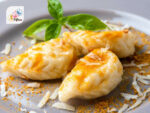
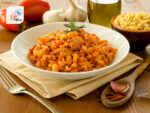




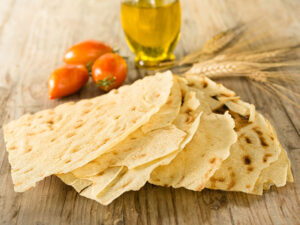
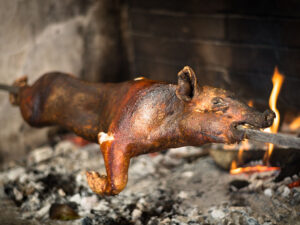
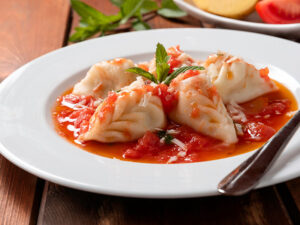
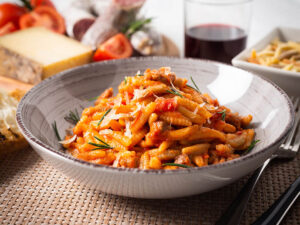
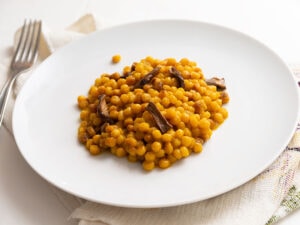
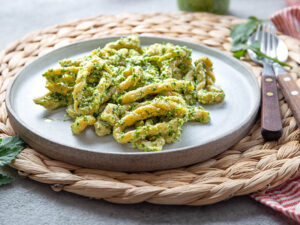
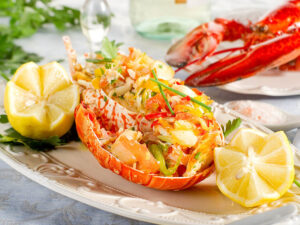
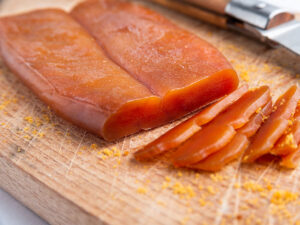
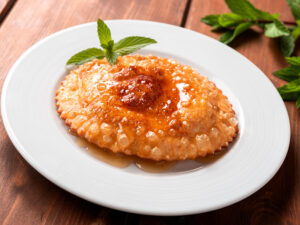
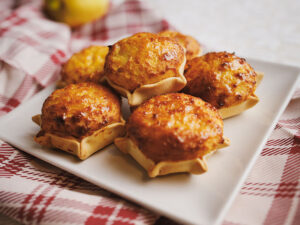
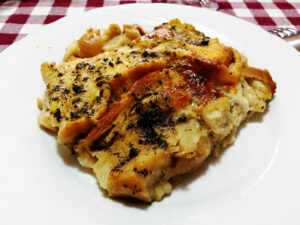
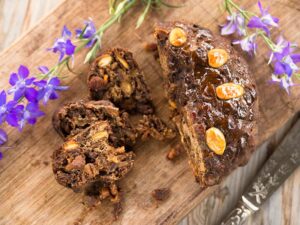
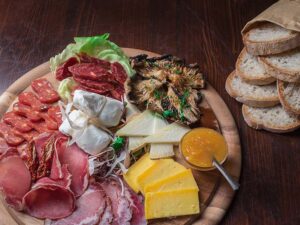
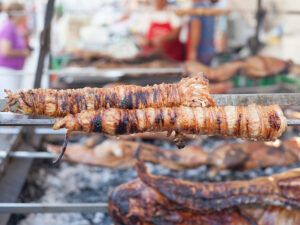
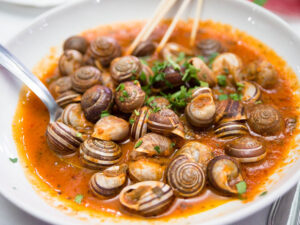
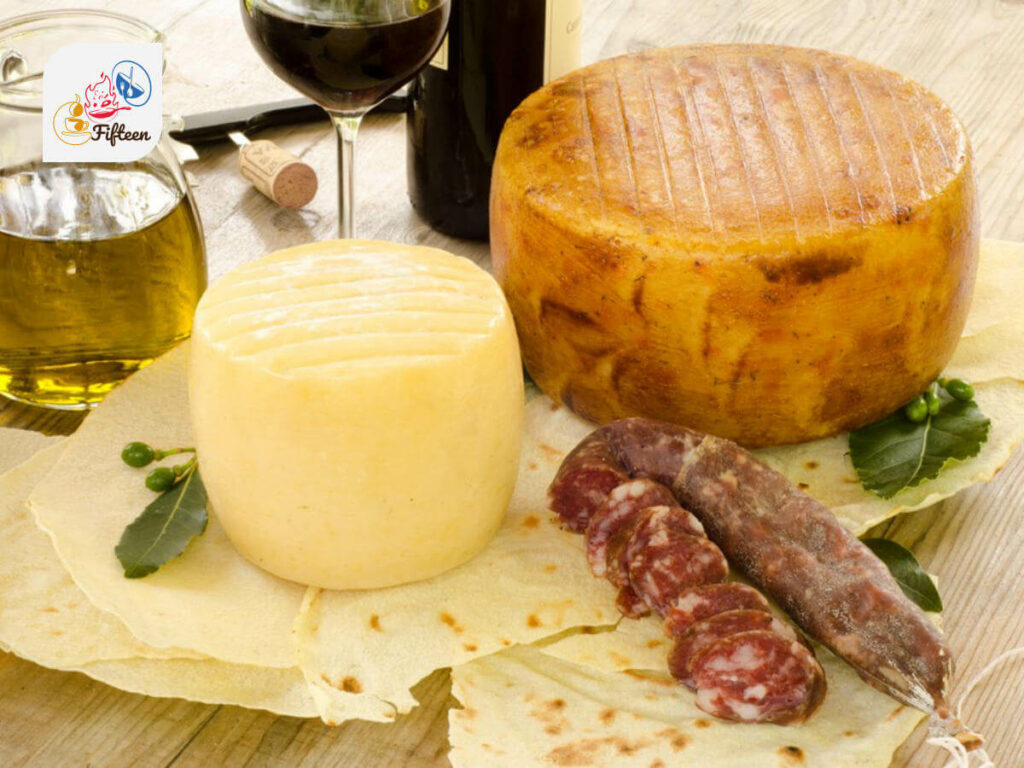
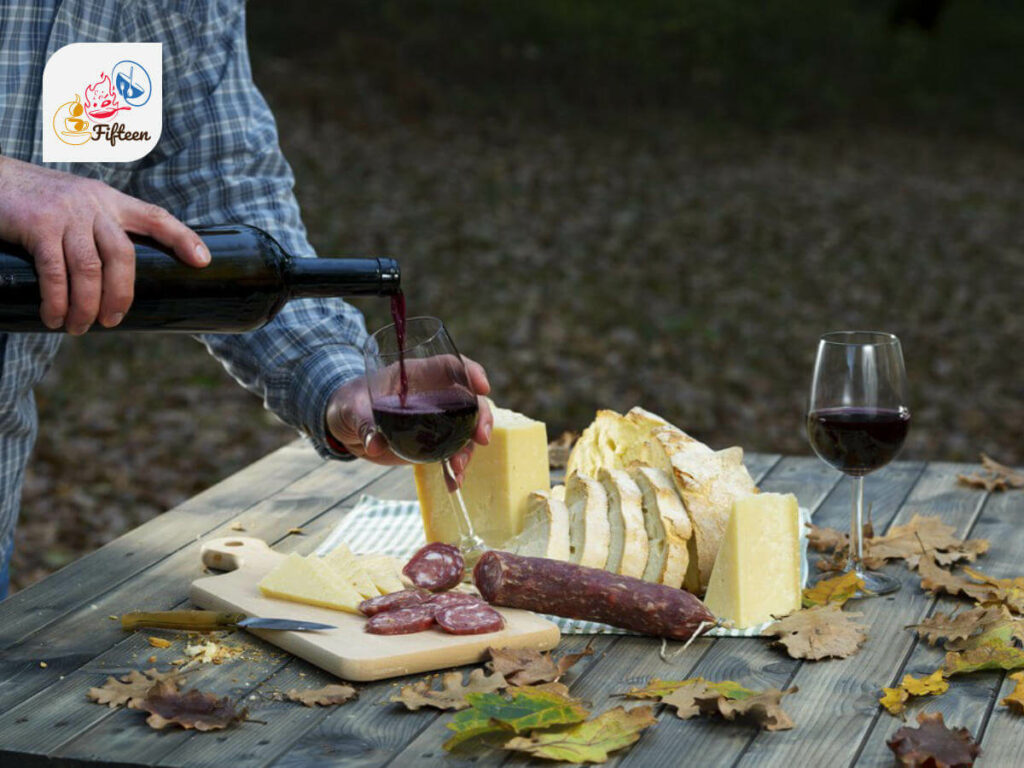

Jamie Scott
Editor in Chief, Senior Content Writer
Expertise
Home Cooking, Meal Planning, Recipe Development, Baking and Pastry, Food Editor, Cooking-video Maker, Western Food Evaluation Expert
Education
Le Cordon Bleu College of Culinary Arts
Local Community College, New York, NY
Jamie Scott is a skilled culinary expert and content creator specializing in Western cuisine. With over 15 years in the culinary field and formal training from Le Cordon Bleu, Paris, Jamie deeply understands how to blend nutrition with delicious flavors. His passion for cooking matches his commitment to making healthy eating accessible and enjoyable.
On Fifteen.net, Jamie brings a fresh perspective to classic dishes and beverages, offering readers insightful recipes, cooking tips, and a fresh view on meal planning that emphasizes taste, health, and simplicity.